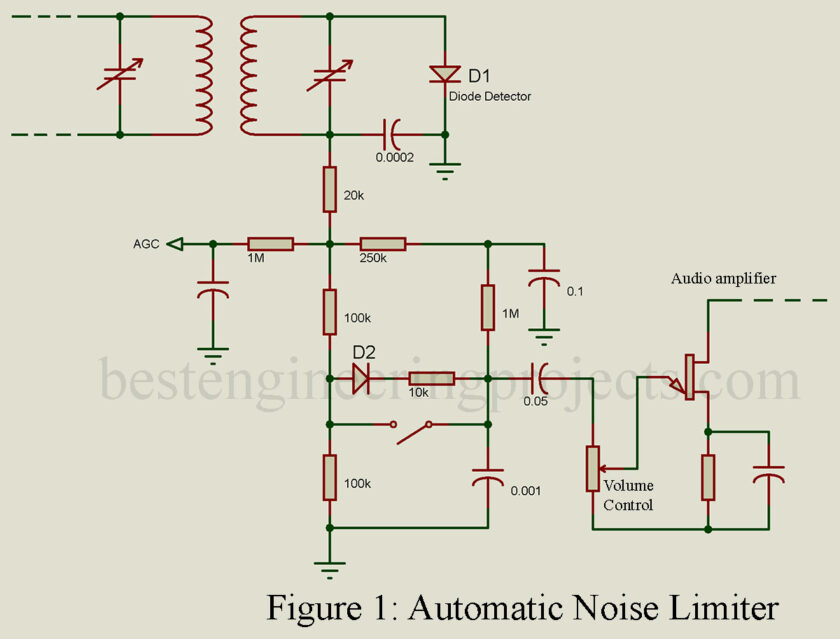Man-made sources of external noise are extremely troublesome to highly sensitive communications receivers as well as to any other electronic equipment that is dealing with signals in the microvolt region or less. The interference created by these man-made sources, such as ignition systems, motor communication systems, and switching of high current loads, is a form of electromagnetic interference (EMI).
Reception of electromagnetic interference by a receiver creates undesired amplitude modulation, sometimes of such large magnitude as to adversely affect Frequency Modulation reception, to say nothing of the complete havoc created in Amplitude Modulation systems. While these noise impulses are usually of short duration, it is not uncommon for them to have amplitudes up to 1000 times that of the desired signal. A noise limiter circuit is employed to silence the receiver for the duration of a noise pulse, which is preferable to a very loud crash from the speaker. These circuits are sometimes referred to as automatic noise limiter (ANL) circuits.
A common type of circuit for providing noise limiting is shown in Figure 1. It uses a diode, D2, that conducts the detected signal to the audio amplifier as long as it is not greater than some prescribed limit. Greater amplitudes cause D2 to stop conducting until the noise impulse has decreased or ended. The varying audio signal from the diode detector, D1, is developed across the two 100-k resistors. If the received carrier is producing a -10-V level at the Automatic Gain Control Control (AGC) takeoff, the anode of D2 is at -5 V and the cathode is at – 10 V.
The diode is “on” and conducts the audio into the audio amplifier. Impulse noise will cause the Automatic Gain Control takeoff voltage to instantaneously increase, which means the anode of D2 also does. However, its cathode potential does not change instantaneously since the voltage from the cathode to the ground is across a 0.001-F capacitor. Remember that the voltage across a capacitance cannot instantaneously change. Therefore, the cathode stays at -10 V, and as the anode approaches -10 V, D2 turns “off” and the detected audio is blocked from entering the audio amplifier. The receiver is silenced for the duration of the noise pulse. The switch across D2 allows the noise limiter action to be disabled by the user. This may be necessary when a marginal (noisy) signal is being received and the set output is being turned off excessively by the Automatic Noise Limiter.
